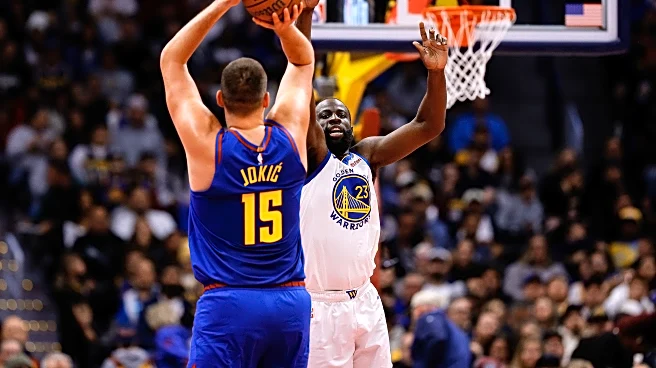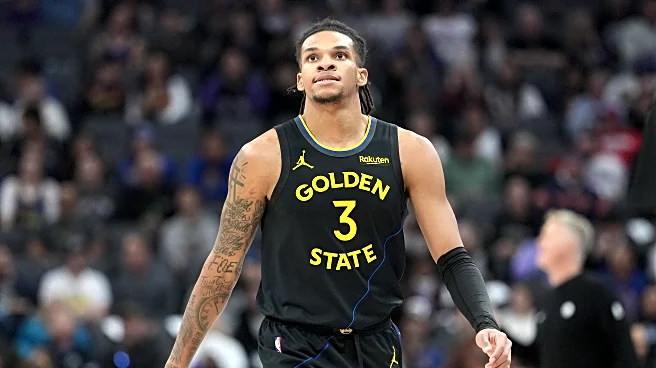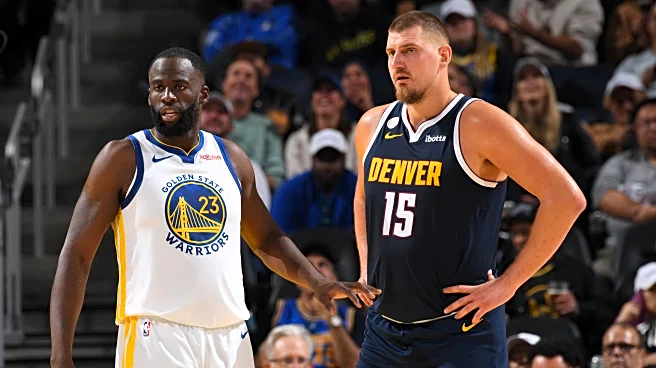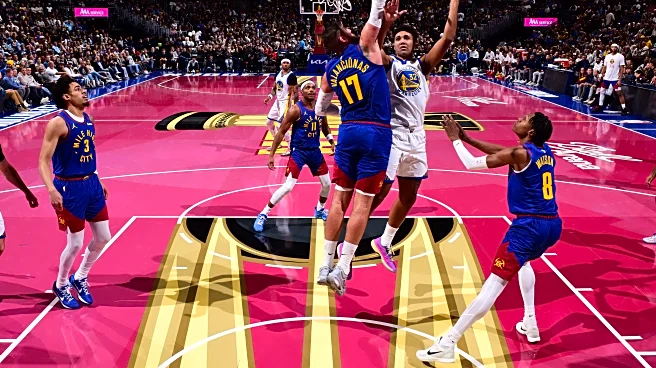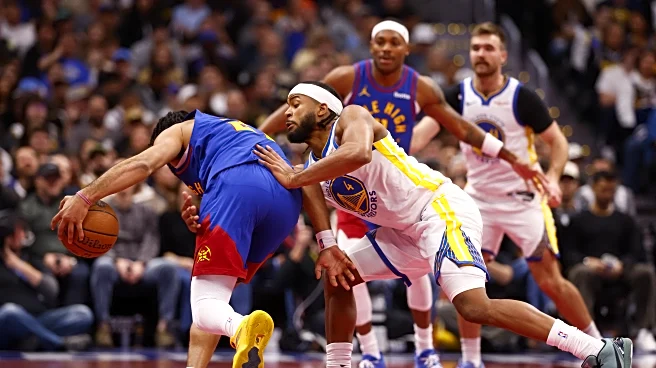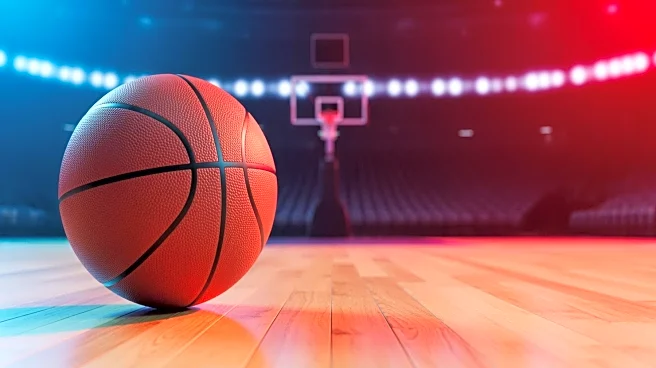Rookie Will Richard is making waves this season despite having to fight the typical battle that most rookies are burdened with in the NBA: the need to prove that they are worthy of rotation minutes, let
alone minutes that are important behind deciding the outcome of a game. On a team where the pecking order does have some semblance of clarity, Richard would typically be mired within the doldrums of the roster and therefore be sent to Santa Cruz with the Sea Dubs in order to keep his legs warm and mind sharp.
However, Richard — a key part of the Florida Gators’ national championship team — possesses one key trait that these Golden State Warriors highly value, especially in an offense with Steph Curry as its central figure: Richard, simply put, just gets it.
That statement is as general and vague as it can get in several other contexts, but when it comes to the Warriors, it’s as clear as day. Knowing who butters the bread for everybody on the team and making sure he does the buttering as effectively as he can is the best way to win over Steve Kerr’s heart — or at least make him look your way. For Richard, who played with one of the best shooters in the collegiate level in Walter Clayton Jr., he knows a thing or two about playing off of an elite shooter.
When that shooter happens to be the greatest of all time, the simple play — often not as simple to others as it seemingly is to Richard — is to find him, let him know you’re next to him, and set a flare screen on the weak side, at the same time as a drive from Jimmy Butler is happening:

Among other things that have mostly been overt, it is a subtle part of Richard’s game that has garnered him a certain level of trust from Kerr and the coaching staff. Despite being a 6’3” guard whose short stature adds to a roster that already has plenty of vertically challenged personnel, Richard is able to stay on the floor due to a couple of compensatory tenets. For one, being a high IQ basketball player is music to Kerr’s ears. Another thing is having a 6’10” wingspan, giving him a plus-7 wingspan-height difference. For reference, Moses Moody (6’5” height, 7’1” wingspan) and Draymond Green (6’6” height, 7’1” wingspan) have similar physical profiles.
The IQ part of the equation is apparent in the possession above, while another thing that highlights his basketball acumen is his ability to cut into space given to him and off of advantages that have been created for him. Per Synergy tracking, 14 possessions have involved a Richard cut, in which he has scored a total of 18 points — 1.286 points per cut. Synergy requires that a player has to average a minimum of 10 minutes per game and have 10 possessions per play type to qualify for ranking metrics, both of which Richard apparently falls short of. Nevertheless, in his relatively small sample size of being a cutter, he has immediately shown what is arguably his most valuable offensive trait.
That is to no surprise if you followed his collegiate career. Richard, along with Clayton Jr., is adept at beating “top-lock” coverages by cutting backdoor. Note how Richard also has a knack for setting his defender up for the backdoor cut: a slight stunt as if to come up for the handoff, before shifting toward the other way:

So far in his young career, Richard hasn’t had to be treated as a shooter coming off of screens and handoffs to the degree that he commands excessive top-locking — except for one possession against the Indiana Pacers, in which Richard was somewhat top-locked by Jarace Walker, who found himself on the wrong end of a spin counter that allowed Richard to cut backdoor and dart toward the rim against non-existent rim protection:

Most of the time, what Richard has done instead is to make sure that he is available whenever the defense’s eyes aren’t focused on him and are instead directed toward a more immediate offensive threat. Curry certainly qualifies as one of those immediate threats, while post-ups by the likes of Jonathan Kuminga — especially against a mismatch — attract the defense long enough for them to forget that Richard even exists. Before they know it, Richard has already slipped past the weak-side defense and toward a position where the pass can be made:

That goes for Richard whether he’s in the corners or located at the slot area, where he has often taken advantage of defenders looking away from him through opportunistic slot cuts:

The common theme present in most if not all of the cuts above: Richard punishing defenders whose heads are turned away from him, ranging from momentary glances toward the ball to outright ignorance of the lurking danger creeping in from behind. But it’s more than just knowing when defenders are looking away — it’s also having a sense of timing.
“As soon as I see the defender’s head turn, that’s when I cut. Or when I see the back of their numbers, that’s when I know to cut,” Richard said after the Warriors’ win over the Pacers.

On a team where prioritization of offensive roles have gone toward profiles who can handle the ball, pass, score, and/or shoot the ball, Richard — who doesn’t profile as a ball-handling guard capable of setting the table, nor as an off-the-dribble ball-pounding scorer — has had to make noise by being deceptively silent, as he has done plenty of times this season through his cuts, while also shooting the three-ball at a more-than-passable rate of 40.7% (11-of-27). There has been as much value garnered from him staying put as there has been from him staying on the move.

Complementing his low-usage offense that has been highly efficient, Richard — more importantly, it can be argued — can defend his butt off. Whether as an individual defender cutting off drives and making good use of his arms and hands to contest:

Or being a general pest in the passing lanes with his long arms catching even a sliver of the ball — deflections that have often led to points off of turnovers:

Granted, if total plus-minus metrics are the sole measuring stick through which one analyzes Richard and his impact this season, one would think that he has been among the worst players for the Warriors. The team has been outscored by a total of 35 points during Richard’s minutes, the worst plus-minus mark on the roster. There seems to be a discrepancy between the eye-test and what the numbers say in that regard. That can be attributed to the lineups Richard has had to play with, with Kerr scrambling to find combinations that work and parsing through ones that clearly don’t mesh, which Richard has been a part of, to the detriment of his plus-minus mark.
However, I am of the opinion that Richard has done much more good than harm. The rookie mistakes and moments of adjustment will linger for a while, but Richard should be allowed to play through his shortcomings. More often than not, he has displayed a certain level of veteran acumen in a body and mind that has played a mere nine games of professional basketball. He has more than made the cut — mostly, by being a low-maintenance, low-usage, and high impact player, including but not limited to the cuts that have been a hallmark of his offense.



